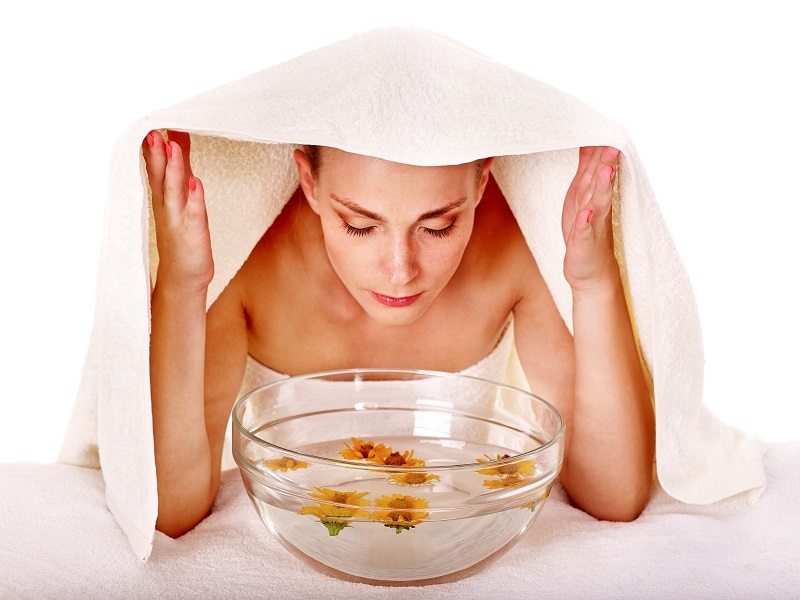Mastering the Art of Hydrangea Care for Gorgeous Blooms
Hydrangeas are timeless garden favorites, renowned for their variety of stunning blossom colors and fantastic landscape value. Whether lining cottage paths, gracing bold borders, or brightening up patio pots, hydrangeas dazzle with their impressive flowers and lush greenery. However, achieving those show-stopping hydrangea blooms requires a nuanced approach to care. This comprehensive guide will walk you through everything you need to know about cultivating gorgeous hydrangeas in your garden.

Table of Contents
- Why Grow Hydrangeas?
- Understanding Different Types of Hydrangea
- Selecting the Ideal Spot
- Soil Preparation and Planting
- Watering and Moisture Needs
- Fertilization for Fuller Blooms
- Pruning for Perfect Hydrangeas
- Managing Pests and Diseases
- How to Change Hydrangea Flower Color
- Companion Planting for Hydrangeas
- Seasonal Hydrangea Care Tasks
- Troubleshooting Common Hydrangea Problems
- Frequently Asked Questions
Why Grow Hydrangeas?
Hydrangeas are beloved for their:
- Showy blooms from summer to fall
- Long lifespan and easy propagation
- Range of blossom colors--pink, blue, white, purple, and even green
- Adaptability to different garden settings
- Ability to attract pollinators, such as bees and butterflies
The appeal of hydrangea gardening lies in the versatility of these shrubs--equally at home in shaded woodland gardens, bold borders, or modern landscapes. *Mastering the art of hydrangea care* brings you more than just pretty flowers; it delivers garden structure and wildlife value, year after year.
Understanding Different Types of Hydrangea
Not all hydrangeas are created equal. Knowing your hydrangea species is a crucial step towards mastering their care.
Main Hydrangea Types:
- Hydrangea macrophylla (Bigleaf or Mophead Hydrangea): Famous for large, color-changing blooms. Ideal for borders and containers.
- Hydrangea paniculata (Panicled Hydrangea): Cone-shaped, creamy-white flowers that age to pink. Highly resilient, tolerates more sun.
- Hydrangea arborescens (Smooth Hydrangea): Bold white flower heads, such as 'Annabelle'. Handles shade and thrives with consistent moisture.
- Hydrangea quercifolia (Oakleaf Hydrangea): Distinctive oak-shaped leaves and elongated blooms, often turning pink.
- Hydrangea serrata (Mountain Hydrangea): Smaller, delicate blooms, popular for compact gardens.
- Climbing Hydrangea (Hydrangea anomala petiolaris): Vining habit, with white lacecap flowers, perfect for walls and fences.
Each hydrangea type brings unique needs for soil, pruning, and site selection. Diagnosing your plant variety is the first secret to achieving those gorgeous hydrangea blooms.
Selecting the Ideal Spot for Hydrangeas
Location is vital for success in hydrangea gardening. The optimal site balances protection from extreme sun and wind, with the right amount of ambient moisture.
- Light: Most hydrangeas prefer morning sun and afternoon shade. Panicle hydrangeas tolerate more direct sun, while bigleaf varieties may scorch in intense heat.
- Wind: Shelter large-flowering hydrangeas from strong winds, which can snap stems and scorch foliage.
- Air Circulation: Good spacing minimises humidity-loving diseases such as powdery mildew.
- Accessibility: Consider ease of maintenance, watering, and viewing when choosing your hydrangea's home.
Place hydrangeas where you can truly admire their spectacular flowers--near patios, along paths, or beside entryways. A little planning ensures your efforts in mastering hydrangea care delivers beautiful results season after season.
Soil Preparation and Planting
To unlock the secret of gorgeous hydrangea flowers, begin with the soil. Hydrangeas thrive in rich, well-drained, and moist soils. Here's how to prepare their beds:
Steps for Preparing Soil:
- Test the Soil pH: Bigleaf and mountain hydrangeas change bloom color based on soil acidity. Aim for 5.2-5.5 for blue flowers, or 6.0+ for pink blooms.
- Enhance Organic Matter: Mix in compost, leaf mold, or well-rotted manure to boost drainage and fertility.
- Ensure Good Drainage: Avoid spots where water puddles after rain. Consider adding sand or perlite in clay soils.
- Dig Generously: Plant at the same depth they grew in their pot (never deeper), spacing shrubs 3-8 feet apart depending on their mature size.
Water thoroughly after planting and mulch with shredded bark or compost to retain moisture and suppress weeds.
Watering and Moisture Needs
Consistent watering is key to healthy hydrangeas and their spectacular blooms. Here's how to get it right:
- Frequency: Hydrangeas need at least 1 inch of water per week, and more during hot periods or in sandy soil.
- Techniques: Water thoroughly at the base, avoiding leaves to reduce disease issues. Early morning is the best time.
- Mulching: A 2-3 inch layer of organic mulch helps keep roots cool and evenly moist.
- Tip: Watch for wilting and brown leaf edges, signs that your hydrangea care routine needs more hydration attention.
Remember, both drought and waterlogging can quickly stress hydrangeas, impacting flower production and quality.
Fertilization for Fuller Blooms
Optimizing fertilization is a secret to maximizing hydrangea blooms:
Best Practices for Fertilizing Hydrangeas:
- Apply a balanced slow-release fertilizer in early spring, such as a 10-10-10 or 12-4-8 blend.
- Avoid high-nitrogen products; these promote leafy growth over flowers.
- For repeat blooming hydrangeas, top-up lightly after the first flush of flowers fades.
- Always water well before and after feeding.
Over-fertilizing can cause lush, green plants with few blooms--so less is often more for luxuriant hydrangea flowers.
Pruning for Perfect Hydrangeas
Knowing when and how to prune hydrangeas is essential for getting gorgeous blooms year after year, since incorrect timing may remove flower buds.
Pruning by Hydrangea Type:
- Bigleaf & Mountain Hydrangeas: Prune lightly after flowering (late summer), removing spent blooms and weak stems. Avoid hard pruning in spring, as buds form on last year's wood.
- Panicled & Smooth Hydrangeas: Prune hard before spring growth begins, as these flower on new wood. Cut stems back to 1/3 or 1/2 of their height for more robust blooms.
- Oakleaf Hydrangeas: Minimal pruning needed, just remove dead wood after flowering.
Deadheading spent hydrangea blossoms keeps plants tidy and sometimes encourages repeat blooming on re-blooming varieties.
Managing Pests and Diseases
Achieving healthy hydrangea growth includes pest and disease vigilance. While hydrangeas are generally robust, look out for:
- Aphids: Small, sap-sucking insects. Rinse off with water or treat with insecticidal soap.
- Spider Mites: Fine webbing and pale spots signal their presence. Boost humidity and spray with water as needed.
- Powdery Mildew, Leaf Spot, Botrytis: Prevent through good spacing, removing fallen foliage, and keeping leaves dry.
- Slugs: Especially on young leaves. Use eco-friendly traps or barriers.
Regular monitoring keeps your hydrangea care regime on track for gorgeous, healthy plants with less chemical intervention.
How to Change Hydrangea Flower Color
Perhaps the most magical aspect of hydrangea gardening is shifting flower colors, particularly in Hydrangea macrophylla and H. serrata types.
Color-Changing Secrets:
- Blue Flowers: Soil must be acidic (pH below 5.5). Add aluminum sulfate, sulfur, or organic matter like pine needles.
- Pink Flowers: Alkaline soils (pH above 6.0). Apply lime or dolomitic limestone. Reduce aluminum availability in soil.
- White Hydrangeas don't change color based on soil pH.
Remember, changes are gradual and may take a season or more. Consistent monitoring of pH is key to mastering color control in hydrangea care.
Companion Planting for Hydrangeas
Great plant combos build garden beauty and health. Surround hydrangeas with shade-loving perennials or evergreens for continuous interest:
- Hostas - gorgeous foliage contrast
- Ferns - add delicate, feathery texture
- Heuchera (Coral Bells) - colorful foliage for year-round appeal
- Astilbe - feathery plumes echo hydrangea's soft shapes
- Boxwood or Yew - define structure and provide winter interest
Mixing these plants fosters soil health, helps retain moisture, and ensures your hydrangeas are always the star performers in your landscape.
Seasonal Hydrangea Care Tasks
For ongoing hydrangea garden success, tune your tasks to the season:
Spring:
- Prune smooth and panicle hydrangeas
- Mulch and fertilize
- Divide and transplant if needed
Summer:
- Maintain watering regime
- Deadhead spent flowers
- Monitor for pests and diseases
Autumn:
- Minimal pruning for bigleaf types
- Reduce watering as plants go dormant
- Apply mulch to protect roots
Winter:
- Insulate roots where winters are harsh with extra mulch
- Never prune except for removing dead growth
Troubleshooting Common Hydrangea Problems
Even expert gardeners confront challenges. If you're not getting hydrangea blooms, try these solutions:
- No flowers? Frost may have killed buds, or incorrect pruning removed flower wood--review species and seasonal pruning advice.
- Wilting leaves? Most often due to underwatering or heat stress--mulch and irrigate more deeply.
- Brown edges? Wind burn or salt injury; increase protection and flush salts from soil if in coastal regions.
- Yellow leaves? Overwatering or poor drainage; always check root health and adjust watering habits.
Regular attention and quick action prevent small issues from jeopardizing your array of colorful hydrangea blooms.
Frequently Asked Questions about Hydrangea Care
-
Can hydrangeas bloom in full shade?
While most types prefer some sunlight, smooth and oakleaf hydrangeas tolerate more shade. However, *some direct sun produces the best blooms*. -
How often should I water my hydrangea plants?
Deeply water once or twice per week depending on rainfall, soil type, and temperature. -
How do I revive a drooping hydrangea?
Water immediately and shade from harsh sun. If roots dry, soak the root ball in a bucket for 20-30 minutes. -
Should I cut hydrangeas back in fall?
Only prune out dead stems. Pruning types with old-wood blooms at this time can remove next year's flowers. -
Can I propagate hydrangeas at home?
Yes! Hydrangeas root easily from softwood cuttings in early summer. Dip in rooting hormone and keep moist.

Conclusion: Unlock Lush Blooms with Expert Hydrangea Care
Mastering the art of hydrangea care is the surest way to nurture stunning, healthy hydrangea plantings in your home garden. By choosing the right type, preparing the perfect soil, fine-tuning watering and feeding, and understanding each species' unique requirements, your hydrangeas will reward you with a dazzling display of color and grace for years to come.
With these tips, you'll become a true hydrangea enthusiast, capable of growing magnificent hydrangea blooms season after season. Happy gardening!

